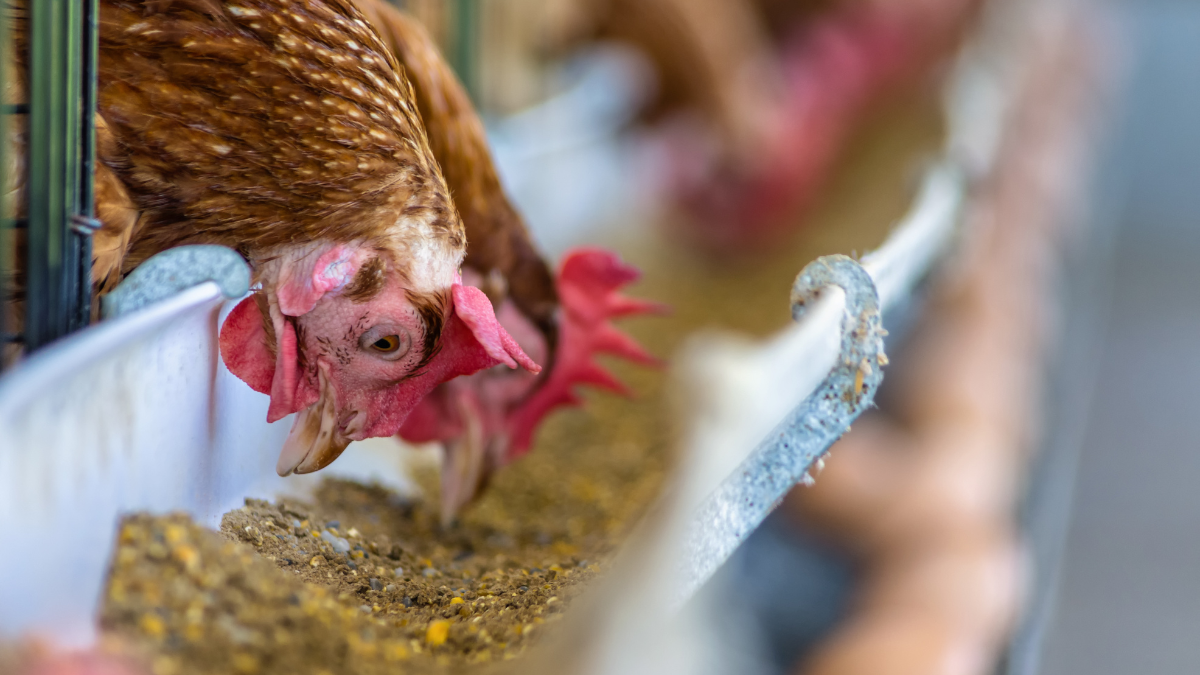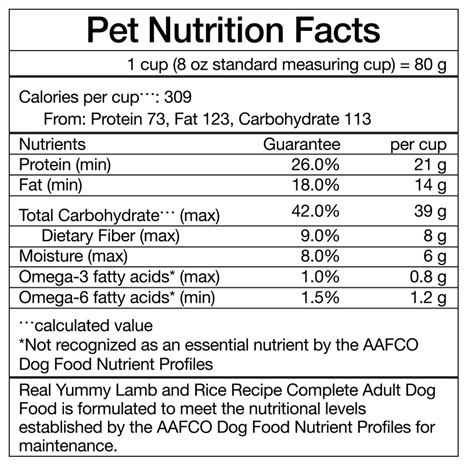Canadian Poultry Industry Council Golf Tournament
Foxwood Golf and Country Club
Ontario, Canada

North America

Europe

Latin America

Asia Pacific

Africa

Middle East
Foxwood Golf and Country Club
Ontario, Canada
Les animaux d’engraissement peuvent être à risque de souffrir de problèmes de santé liés aux mycotoxines. Pourquoi n'avons-nous pas davantage réfléchi au risque de mycotoxines dans le bétail ? D'autres secteurs de production animale ont reconnu ce risque depuis longtemps, mais il est souvent négligé dans le secteur de la viande bovine. Cependant, cette situation semble avoir légèrement évolué ces dernières années, à mesure que de meilleures méthodes d'analyse ont révélé davantage de mycotoxines et que les producteurs comprennent mieux l'impact négatif que les mycotoxines peuvent avoir sur les animaux.
Les mycotoxines peuvent se retrouver dans les aliments souvent utilisés pour nourrir le bétail. Les mycotoxines sont des toxines naturelles produites par certains types de moisissures, les plus courantes provenant des familles Aspergillus, Fusarium, Penicillium et Claviceps. Bien que le processus ne soit pas entièrement compris, il est supposé que les mycotoxines se manifestent lorsque les moisissures sont soumises à un stress. Ce stress peut être induit par des températures fluctuantes ou par des sécheresses ou des pluies excessives, parmi d'autres facteurs de stress. Cela vous semble-t-il ordinaire ces dernières années ?
La croissance de moisissures dans les ingrédients pour aliments peut provoquer un problème de mycotoxines à tout moment de la vie de la culture : pendant la saison de croissance, après la récolte ou durant le stockage. Lorsqu'ils sont analysés, la plupart des ingrédients montrent la présence de plusieurs mycotoxines, et il n'est pas rare d'en trouver cinq ou plus. L'Analyse de la Récolte 2023 d'Alltech, qui examine le risque de mycotoxines dans les récoltes de maïs, que ce soit en ensilage ou en grain, a montré une moyenne de 4,9 mycotoxines par échantillon, avec 91,5 % des échantillons montrant deux mycotoxines ou plus. L'analyse a couvert plus de 400 échantillons d'ingrédients provenant de toutes les régions des États-Unis. Ces échantillons ont été analysés par le laboratoire Alltech 37+®.
Un problème de mycotoxines peut se manifester de plusieurs manières. Il a été démontré que les mycotoxines réduisent le rendement et les gains économiques du bétail, diminuent les taux de conception, augmentent les problèmes de santé animale et réduisent le nombre de vêlages. Certains symptômes courants d'une exposition aux mycotoxines peuvent inclure une consommation alimentaire réduite et incohérente, un manque de réponse au traitement, une diminution de la prise quotidienne moyenne, des boiteries, des avortements, des chaleurs répétées et une diminution de la production de lait, ce qui peut conduire à des taux de croissance plus faibles chez les veaux.
Il existe plusieurs façons d'analyser les mycotoxines. Les producteurs de céréales peuvent être familiers avec le test à la lumière noire, réalisé dans certains silos, qui est utilisé pour inspecter visuellement certaines mycotoxines. Cependant, ce test ne fonctionne pas pour toutes les mycotoxines, en particulier celles qui sont plus fréquentes aux États-Unis. Pour avoir une meilleure idée de la quantité totale et des variétés, il est préférable d'envoyer un échantillon à un laboratoire pour analyse. Il existe des variations dans les équipements, les processus et le nombre de mycotoxines qui peuvent être détectées par différents laboratoires. Le laboratoire Alltech 37+ à Lexington, Kentucky, analyse actuellement 54 mycotoxines différentes et fournit un rapport montrant les types et quantités détectés ainsi que l'impact potentiel de ces mycotoxines, surtout lorsqu'elles co-contaminent. Cette information peut aider les producteurs à comprendre l'impact physique et financier des mycotoxines sur leurs opérations.
Vous pouvez atténuer le risque de mycotoxines grâce à des tests et une nutrition proactive. Les mycotoxines peuvent surgir à tout moment et il a été démontré qu'elles affectent négativement les animaux à toutes les étapes de la production. Heureusement, il existe des moyens pour compenser le risque que représentent les mycotoxines. Discutez avec un représentant d'Alltech des stratégies pour atténuer l'impact des mycotoxines sur vos productions animales et pour obtenir une vue d'ensemble du risque de mycotoxines dans les récoltes de 2023.
Auteur : Bryan Sanderson , Alltech USA

Alltech InTouch is pleased to welcome Sam Wall to the team.
Raised on a family farm in Somerset, Sam has always had a keen interest in animals and agriculture. He studied animal science at Nottingham University, and it was during his studies that he developed a keen interest in animal nutrition. He was especially interested in how small changes on-farm can lead to big impacts on cow health and overall profitability.
On graduating in 2018, Sam started his career working at a feed company, where he spent six years offering farmers nutritional advice. During this time, Sam studied for a master’s in ruminant nutrition at Harper Adams University, where he was awarded his M.Sc. in 2022. His studies included a research project on feeding transition dry cows with a feed additive, evaluating the impact it can have on their following lactation.
Now Sam looks forward to applying his knowledge and experience as an InTouch Feeding Specialist, working with farm management teams throughout the South West to maximise milk from forage and optimise performance sustainably.
“It’s the research and data behind the Alltech on-farm technologies that drew me to the role,” Sam said. “There is a wealth of data available to farmers and consultants, making for more informed decision-making on individual units. I look forward to utilising the full capabilities of InTouch on-farm. To have an instant figure showing how efficiently the herd is converting the ration in real time is a really useful piece of data to work to.”
Contact Sam at +44 (0) 7707 857587 or Sam.Wall@Alltech.com.

Chloe Chisholm is the content manager for the Technology Group at Alltech. In this role, she is responsible for planning and delivering compelling content for all technologies and services in collaboration with the Technology Group marketing leads and wider Alltech creative team. Chloe has been with Alltech since 2022, previously supporting the Mycotoxin Management team as a digital marketing specialist. Chloe holds a degree in English language and literature from Brighton University and is based in Stamford, U.K.

In the latest episode of “Mycotoxin Matters,” host Martin Minchin, commercial marketing director at Alltech, is joined by Dr. Alexandra Weaver and Dr. Jules Taylor-Pickard to delve into some comprehensive meta-analyses conducted by Alltech’s research teams. These analyses focus on the effects of mycotoxins on monogastric animals like pigs and poultry.
Here are the key takeaways from the discussion:
Meta-analysis, a statistical method that combines results from multiple studies, has become a vital tool in Alltech’s research. A key benefit of meta-analysis is the ability to simplify complex research, making it easier to make informed decisions based on a thorough review of existing evidence.
Dr. Alexandra Weaver, global technical support at Alltech, highlighted the benefits of meta-analysis: "Meta-analysis allows you to bring all of the different research within a category together and get one overall conclusion."
“It also simplifies research by summarizing many studies into one comprehensive paper, making it easier for readers to interpret and for producers to address issues like mycotoxins more effectively,” added Dr. Jules Taylor-Pickard, technical director, technology group at Alltech.
By gathering data from numerous individual studies, Alltech’s mycotoxin meta-analyses have provided robust insights into the overall impact of mycotoxins and the efficacy of mitigation strategies.
Mycotoxins, toxic compounds produced by certain types of fungi, pose a significant threat to livestock health and performance. These toxins can contaminate feed, leading to a range of adverse effects on animals, including reduced growth rates, decreased reproductive performance, weakened immune systems, and even mortality. For monogastric animals like pigs and poultry, the presence of mycotoxins in their diet can result in notable declines in productivity, such as reduced egg production and weight in laying hens and impaired growth in broilers and pigs. Addressing mycotoxin contamination through effective mitigation strategies is crucial for maintaining livestock health and farm profitability.
Key mycotoxins affecting monogastric animals include mycotoxins such as aflatoxins, fumonisins, trichothecenes and zearalenone, each bringing a unique set of challenges:
Understanding these impacts and risk factors — including how various combinations of mycotoxins may cause damage that they would not cause individually — is crucial for developing effective mitigation strategies to protect animal health and the productivity of any livestock production.
In this podcast, Dr. Weaver and Dr. Taylor-Pickard highlight how mycotoxins negatively affect animal performance and discuss what strategies may be helpful in combating the problem. For example, in the meta-analysis carried out by Alltech, in a group of laying hens under a mycotoxin challenge, the mycotoxins were found to reduce egg production by 6.3 percentage points and decrease egg weight by 1.95 grams. However, the administration of yeast cell wall extract (YCWE) to another group under a mycotoxin challenge significantly mitigated these effects, improving egg production by 4.24 percentage points and increasing egg weight by 1.37 grams.
Alltech’s meta-analysis research extends beyond laying hens to include broilers and pigs. Key findings include:
Dr. Taylor-Pickard emphasizes the importance of translating scientific findings into practical solutions for livestock producers. Meta-analyses make it easier to understand complex data and apply it effectively on farms, enhancing both animal welfare and farm profitability. For instance, the application of meta-analysis results has been shown to provide an ROI of 4.7 to 1 in laying hens.
The podcast episode also explores future research directions, particularly in the increasingly important area of sustainability. Alltech’s commitment to using advanced techniques like nutrigenomics allows for deeper insights into how nutritional interventions can improve animal health and productivity while addressing consumer concerns and regulatory requirements.
Alltech’s extensive meta-analyses underscore the significant impact of mycotoxins on livestock and the effectiveness of mitigation strategies like YCWE. These insights not only enhance our understanding of mycotoxins but also provide actionable strategies to improve livestock production and sustainability. As research continues, Alltech remains at the forefront, integrating advanced scientific methods to address the evolving challenges in livestock production.
🎧Listen to the Mycotoxin Matters podcast episode here.
About the author:

Chloe Chisholm is the content manager for the Technology Group at Alltech. In this role, she is responsible for planning and delivering compelling content for all technologies and services in collaboration with the Technology Group marketing leads and wider Alltech creative team. Chloe has been with Alltech since 2022, previously supporting the Mycotoxin Management team as a digital marketing specialist. Chloe holds a degree in English language and literature from Brighton University and is based in Stamford, U.K.

El pollo y los huevos son ricos en proteínas y versátiles, lo que los convierte en el ingrediente principal de muchas comidas. Esto convierte a las aves de corral en una de las carnes más consumidas en todo el mundo, y se espera que el consumo total alcance los 91 millones de toneladas para 2032. A partir de este nivel de consumo, está claro que los productos avícolas son una fuente importante de nutrición. Sin embargo, el pollo y los huevos crudos pueden estar contaminados con patógenos que causan enfermedades transmitidas por los alimentos, como Campylobacter, Salmonella y Clostridium perfringens. Estas bacterias pueden propagarse a los productos alimenticios durante el sacrificio y el procesamiento, causando infecciones transmitidas por los alimentos. Estas infecciones son un importante problema de seguridad alimentaria y de salud pública.
Tradicionalmente, estos patógenos se han abordado con productos antimicrobianos, pero esta práctica ha provocado un aumento de la resistencia a los antimicrobianos (RAM). Si bien la resistencia a los antimicrobianos se produce de forma natural con el tiempo, el uso indebido y excesivo de estas herramientas en los seres humanos, las plantas y la producción animal la ha acelerado. Al igual que las enfermedades transmitidas por los alimentos, la resistencia a los antimicrobianos es un problema de seguridad alimentaria, ya que las bacterias resistentes y los genes de resistencia pueden propagarse de los animales a los seres humanos a través de la cadena alimentaria. De hecho, la resistencia a los antimicrobianos es una de las diez principales amenazas para la salud mundial. La resistencia a los antimicrobianos significa que las infecciones se vuelven más difíciles de tratar, lo que resulta en estáncias hospitalarias más prolongadas y una mayor mortalidad; A nivel mundial, 4,95 millones de muertes al año están asociadas con la resistencia a los antimicrobianos y esto podría aumentar a 10 millones por año para 2050 si no se toman medidas. La resistencia a los antimicrobianos también es una enorme carga económica. En el Reino Unido se estima que le cuesta al Servicio Nacional de Salud 180 millones de libras esterlinas al año (229 millones de dólares) y la carga estimada para los EE.UU. es de 55.000 millones de dólares anuales: 20.000 millones de dólares para la asistencia sanitaria y 35.000 millones de dólares por la pérdida de productividad.
El aumento de la concienciación y la preocupación por la resistencia a los antimicrobianos ha llevado a muchos países a prohibir el uso de antibióticos promotores del crecimiento en los piensos para animales. Sin embargo, estas prohibiciones no son suficientes para detener la creciente aparición de resistencia a los antimicrobianos, ya que las tasas de resistencia siguen siendo altas, a pesar de las restricciones al uso de antibióticos. En el último informe resumido de la Unión Europea sobre el tema (2021-2022), la resistencia general de los aislados de pollos de engorde y pavos de engorde a las fluoroquinolonas (ciprofloxacina) fue muy alta (55,5% y 57,9%, respectivamente). También fue alto en gallinas ponedoras (24,7%). La resistencia de los aislados de Salmonella Kentucky a la ciprofloxacina en pollos de engorde, ponedoras y pavos de engorde fue extremadamente alta (84,2%, 82,1% y 100%, respectivamente). Esto subraya que la resistencia a los antimicrobianos es un problema importante de inocuidad de los alimentos.
Por lo tanto, es vital que encontremos formas de reducir la resistencia y aumentar la sensibilidad bacteriana a los antibióticos. Está claro que no existe una "bala de plata" para prevenir y controlar la propagación de la resistencia a los antimicrobianos en la producción avícola, por lo que se necesitará un enfoque multifacético para abordar el problema. Este enfoque debe incluir:
Las alternativas a los antibióticos generalmente buscan mejorar la salud intestinal y el microbioma del ave. Este es el caso de la fracción rica en manano (MRF) derivada de la pared celular de levadura de Alltech, que se ha demostrado que apoya el rendimiento y la salud de las aves como alternativa a los antibióticos, a través de la modulación del microbioma, la unión de bacterias patógenas y la promoción de la salud intestinal. Sin embargo, investigaciones recientes han demostrado que el MRF puede afectar adicionalmente la susceptibilidad bacteriana a los antibióticos.
Si bien las primeras investigaciones se centraron en la capacidad de MRF para controlar patógenos como Salmonella y E. Coli, mejorar la salud intestinal y aumentar la diversidad del microbioma intestinal, las investigaciones publicadas más recientemente (Smith et al., 2017; Smith et al., 2020) se ha centrado en el efecto de la MRF en las bacterias resistentes a los antibióticos. Las últimas investigaciones publicadas (Smith et al., 2022) mostraron el efecto de la suplementación con MRF en el crecimiento de E. coli resistente a los antibióticos con y sin tratamiento antibiótico en relación con un cultivo de control. Descubrieron que la MRF redujo significativamente este crecimiento de E. coli resistente a los antibióticos en relación con el cultivo de control en un 46%, y que la MRF en combinación con el tratamiento con antibióticos (AMP, ampicilina) tuvo una reducción adicional del crecimiento del 73% en E. coli resistente a los antibióticos en relación con el control (Figura 1). Esto indica que el uso de MRF mejora la sensibilidad de las bacterias resistentes a los efectos de los antibióticos.
Esta investigación también demostró que el uso de MRF, con o sin antibióticos, condujo a la regulación positiva de las proteínas del ciclo de TCA en la E. Coli resistente. Estas proteínas se regulan al alza en condiciones de estrés oxidativo y estrés por antibióticos. Además, el MRF aumentó la formación de especies reactivas de oxígeno (ROS) en E. Coli resistente en un 42% en relación con el control y cuando el MRF se combinó con antibióticos, el aumento fue del 59% (Figura 2). Las ROS desempeñan un papel en el metabolismo microbiano y la respuesta a los factores estresantes ambientales. Por lo tanto, estos aumentos en las proteínas del ciclo del TCA y la producción de ROS pueden estar relacionados con efectos bactericidas más eficientes y el cambio en la susceptibilidad a los antibióticos del organismo resistente.
Dado que el pollo y los huevos están en el centro de muchas comidas en todo el mundo todos los días, es tremendamente importante que los alimentos producidos por la industria avícola sean seguros. Esto es crucial para reducir la infección transmitida por los alimentos por Salmonella, Campylobacter y E. coli, disminuyendo así la mortalidad, aliviando la carga económica y reduciendo la posible propagación de la RAM de la agricultura a la población humana.
Adoptar un enfoque sólido y holístico para aumentar la inocuidad de los alimentos en la producción avícola es vital y el uso de soluciones innovadoras como MRF puede ayudar a lograr el objetivo de reducir la prevalencia de bacterias resistentes y salvaguardar la salud pública. La fracción rica en manano (MRF, por sus siglas en inglés) ha demostrado que funciona de tres maneras complementarias para ayudar a lograr este objetivo: apoyar el microbioma y la salud intestinal del ave, hacer que el uso de antibióticos sea menos necesario, aumentar la eficiencia de los antibióticos cuando son necesarios y, por lo tanto, ayudar a disminuir la prevalencia de bacterias resistentes. Esto, en conjunto, ayuda a la producción animal a reducir su contribución al crecimiento y la propagación de la resistencia a los antimicrobianos.

[LEXINGTON, Ky.] – Alltech is pleased to announce that Dr. Jamil Faccin has joined the U.S. Pork team as a swine technical and nutrition specialist. Dr. Faccin joins Alltech following successful completion of his Ph.D. and postdoctoral programs at Kansas State University.
Dr. Faccin is originally from southern Brazil and currently lives with his wife Paula in Manhattan, Kansas. He is passionate about swine nutrition, production, research, technology and innovation. He obtained his degree in veterinary medicine at the Federal University of Rio Grande do Sul (UFRGS), Brazil. As an undergraduate, he conducted reproduction research on gilt and sow management and boar semen analysis in commercial swine operations. After obtaining his degree, he spent four years at BRF–Brasil Foods. His primary roles involved health and management assistance for sow farms, GDUs, nurseries and finishers.
In 2017, he obtained a master’s degree at UFRGS under Dr. Fernando Bortolozzo. Wanting to help nursery farmers, he led a partnership between academia and a production company to build and run nursery trials in commercial scenarios. His research during that time focused on nursery management and feeding strategies.
In 2020, he obtained his Ph.D. at UFRGS and K-State Applied Swine Nutrition under Dr. Mike Tokach, conducting on-site trials involving more than 3,600 pigs at Master Agroindustrial, Brazil, and Holden Farms of Minnesota. There, he focused on management and nutrition of pigs with different weaning ages. He also studied the effects of the first week in the nursery on future pig performance.
In 2021, Dr. Faccin joined K-State as a postdoc researcher, engaging in all aspects of nutrition research, teaching, diet formulation, experimental design, protocol planning and implementation, data management, and literature reviews. His recent publications have focused on soybean meal inclusion levels for nursery and finishing pigs, feed additives and low ABC-4 as an alternative to high zinc oxide, a national swine industry VTM survey, a review in gilt development nutrition, and others. He also taught a Topics in Swine Nutrition class and led the Biosecure Ingredient Imports plan with the U.S. Swine Health Improvement Plan (U.S. SHIP).
Dr. Faccin has also hosted hundreds of episodes of SuinoCast, the first Brazilian podcast for the swine industry. He is fluent in English, Spanish and Portuguese.
“We are pleased to welcome Dr. Jamil Faccin to the Alltech U.S. Pork team,” said Mark Hulsebus, sales and portfolio director at Alltech. “His knowledge and experience will enable our team to deliver even more value for our customers by providing in-depth knowledge of the species and its nutritional needs, as well as providing an additional technical production resource.”
For more information about Alltech, visit alltech.com.

Dr. Jamil Faccin has joined the Alltech U.S. Pork team as a swine technical and nutrition specialist.
El microbioma es más que solo un “tema actual” en las investigaciones científicas. Cada organismo vivo –incluyendo los humanos y los animales de compañía– alberga toda clase de microorganismos: como bacterias, hongos, virus o protozoos; que habitan tanto dentro como sobre la superficie de sus cuerpos. A estos microorganismos que conviven en comunidades (y el conjunto de sus genomas) se los conoce como microbioma. Los microbiomas son propios de determinados hábitats: como la piel, los pulmones o el intestino; y pueden ser clave para el sistema inmune de las mascotas.
El proceso de la digestión se inicia cuando un perro o gato coge el alimento con la boca y comienza a masticarlo. Las enzimas presentes en la saliva empiezan así a descomponer los alimentos químicamente. Este proceso continúa con la deglución, la descomposición adicional de la dieta en el estómago, la absorción de los nutrientes en el intestino, y la eliminación de los desechos. La digestión es muy importante no solo porque proporciona nutrientes, sino también porque mantiene un equilibrio adecuado de los líquidos y los electrolitos presentes en el cuerpo de los animales.
En pocas palabras, sí. Numerosas investigaciones han demostrado que la alimentación influye en el sistema digestivo de cada persona –y lo mismo sucede con las mascotas–. La composición y la diversidad de las bacterias del intestino varían en función de la dieta. Por ejemplo: si el alimento es alto en carbohidratos, entonces las bacterias intestinales que favorecen a los carbohidratos se encontrarán a niveles altos.
Cabe señalar también que estos estudios a la vez indican que, debido a que las bacterias tienen una función muy importante en el metabolismo energético, los microbiomas de perros delgados y perros obesos difieren considerablemente. Por lo que sería conveniente tener en cuenta la relación que existe entre el sistema digestivo y el manejo del peso de las mascotas (sobre todo, por la creciente epidemia de obesidad en los animales de compañía). Si bien se requiere más investigación científica, el manejo del peso de los perros y gatos representa una medida proactiva para cuidar su salud intestinal.
Sigue estos consejos para mantener el sistema digestivo de tu mascota en óptimo estado:
Actigen® es una tecnología desarrollada a través de la nutrigenómica para ayudar a los animales de todas las especies en su desarrollo y alcanzar su potencial genético.
Bio-Mos® cumple un papel fundamental en la nutrición y en la producción animal. Es una solución única derivada de una cepa seleccionada de la levadura Saccharomyces cerevisiae, obtenida a través de un proceso patentado desarrollado por Alltech.

เมื่อวันที่ 1 มกราคม 2024 AAFCO ได้ประกาศใช้ Pet Food Model Regulations ฉบับใหม่ อย่างเป็นทางการ ซึ่งเป็นก้าวสำคัญในอุตสาหกรรม กฎระเบียบเหล่านี้ได้รับการพัฒนามาตั้งแต่ปี ค.ศ. 2015 และผ่านการตรวจสอบอย่างเข้มงวดจากผู้มีส่วนได้ส่วนเสียหลายฝ่าย ซึ่งได้แก่ คณะกรรมการอาหารสัตว์เลี้ยงของ AAFCO, การสำรวจผู้บริโภคและกลุ่มเป้าหมาย, รวมถึงการหารือกับหน่วยงานกำกับดูแลต่าง ๆ, สมาคมวิชาชีพ และเหล่าองค์กรการค้าในอุตสาหกรรม
เป้าหมายหลักคือการปรับปรุงฉลากอาหารสัตว์เลี้ยง (pet food) และอาหารสัตว์เลี้ยงอื่น ๆ (specialty pet food) ให้ทันสมัย โดยเน้นการสื่อสารที่ชัดเจนขึ้นเพื่อผู้บริโภค
การเปลี่ยนแปลงเกี่ยวกับฉลาก 4 ประการหลัก:
หนึ่งในการเปลี่ยนแปลงที่โดดเด่นที่สุดคือ กรอบแสดงข้อมูลโภชนาการสัตว์เลี้ยง ซึ่งถูกปรับให้คล้ายกับข้อมูลโภชนาการที่พบในฉลากอาหารของคน โดยให้มีการสื่อสารข้อมูลโภชนาการที่จำเป็นและเข้าใจง่ายในรูปแบบมาตรฐาน กรอบข้อมูลนี้จะช่วยให้ผู้บริโภคตัดสินใจเกี่ยวกับโภชนาการของสัตว์เลี้ยงด้วยข้อมูลที่ครบถ้วนเหมาะสม กรอบข้อมูลโภชนาการนี้จะประกอบด้วยรายละเอียด เช่น ปริมาณการให้ ปริมาณแคลอรี่ การรับประกันสารอาหาร ปริมาณคาร์โบไฮเดรตทั้งหมด และคำประกาศว่าด้วยความเพียงพอด้านโภชนาการของ AAFCO
กรอบข้อมูลโภชนาการของ specialty pet food ได้ถูกปรับเฉพาะ แม้ว่าจะมีข้อมูลส่วนใหญ่เหมือนกับกรอบข้อมูลโภชนาการมาตรฐาน แต่ไม่จำเป็นต้องมีการแสดงข้อมูลแคลอรี่ อย่างไรก็ตาม ต้องมีคำประกาศความเพียงพอด้านโภชนาการเพื่อให้ความชัดเจนเกี่ยวกับความเหมาะสมของผลิตภัณฑ์สำหรับความต้องการเฉพาะของสัตว์เลี้ยงแก่ผู้บริโภค

2. คำแถลงวัตถุประสงค์ของผลิตภัณฑ์:
Nutritional Adequacy Claims (คำกล่าวอ้างความเพียงพอทางโภชนาการ) ซึ่งใช้ยืนยันถึงความสมบูรณ์ทางโภชนาการของผลิตภัณฑ์อาหารสัตว์เลี้ยง ต้องปรากฏอย่างชัดเจนในส่วนล่างหนึ่งในสามของส่วนสำคัญของฉลาก การวางที่ตำแหน่งนี้ทำให้ผู้บริโภคสามารถมองเห็นข้อมูลช่วงวัยที่เหมาะสมและวัตถุประสงค์ของผลิตภัณฑ์ได้ง่ายขึ้น ซึ่งจะช่วยให้พวกเขาเลือกผลิตภัณฑ์ที่เหมาะสมกับความต้องการของสัตว์เลี้ยงได้อย่างมั่นใจ
อาหารสัตว์เลี้ยงที่ใช้ประกอบการรักษาโรคจะต้องระบุชนิดของสัตว์ เช่น “Veterinary Diet for Cats” หรือ “Veterinary Diet for Dogs” ขนมก็ต้องระบุชนิดของสัตว์เช่นกัน เช่น "ขนมสุนัข" หรือ "ขนมแฮมสเตอร์"
อาหารเสริมสำหรับสัตว์เลี้ยง ซึ่งไม่ใช่อาหารสำเร็จและมีจุดประสงค์เพื่อให้สารอาหารเฉพาะ ต้องระบุวัตถุประสงค์และชื่อชนิดของสัตว์ เช่น “Species Food Supplement: Dog”
3. คำแสดงส่วนผสม:
กฎระเบียบใหม่ของ AAFCO ได้มีการเปลี่ยนแปลงใหม่เกี่ยวกับคำแสดงส่วนผสม เพื่อเพิ่มความเข้าใจของผู้บริโภคและรับรองความโปร่งใสและความสม่ำเสมอในผลิตภัณฑ์
สิ่งที่น่าสังเกตเป็นพิเศษคือ การชี้แจงการกำหนดชื่อสำหรับส่วนผสมจากเนื้อสัตว์ สัตว์ปีก และปลา นอกจากนี้ยังมีข้อกำหนดใหม่สำหรับการระบุแหล่งน้ำตาลและพรีมิกซ์วิตามิน/แร่ธาตุ โดยใช้ชื่อสามัญหรือชื่อที่ใช้กันทั่วไปตามที่ระบุใน AAFCO Official Publication
4. คำแนะนำในการจัดการและการเก็บรักษา:
แม้ว่าคำแนะนำในการจัดการและการเก็บรักษาจะเป็นสิ่งที่ไม่ได้บังคับ แต่ก็ได้รับการสนับสนุนให้แสดงข้อมูลภายใต้ข้อกำหนดใหม่ หากมีการแสดงข้อมูลส่วนนี้ คำแนะนำเหล่านี้ต้องอ่านได้ชัดเจนและแสดงหัวข้อเป็นตัวหนา และยังมีการระบุแนวทางการใช้กราฟิกเพื่อประกอบคำแนะนำในการจัดการและการเก็บรักษา เพื่อให้ผู้บริโภคเข้าใจวิธีการจัดการและเก็บรักษาผลิตภัณฑ์อาหารสัตว์เลี้ยงได้ง่าย

การนำไปใช้และการบังคับใช้
การปฎิบัติตามข้อกำหนดใหม่เหล่านี้ จะได้รับการดูแลโดยหน่วยงานกำกับดูแลของรัฐ โดย AAFCO ต้องการให้มีการปฏิบัติตามกฎดังกล่าวทันที เพื่อให้แน่ใจว่าในทุกพื้นที่จะมีการดำเนินการอย่างสม่ำเสมอโดยทั่วกัน เพื่ออำนวยความสะดวกในกระบวนการนี้ AAFCO ได้แนะนำให้หน่วยงานกำกับดูแลของรัฐจัดโปรแกรมเพื่อค่อยๆ ปรับการบังคับใช้ตามดุลยพินิจเป็นเวลาหกปีหลังจากการเผยแพร่ 2024 AAFCO Official Publication อย่างเป็นทางการ
นอกจากนี้ AAFCO จะจัดเวิร์กช็อปเพื่อให้ความรู้เกี่ยวกับกฎระเบียบใหม่แก่ผู้มีส่วนได้ส่วนเสีย เวิร์กช็อปครั้งล่าสุดจัดขึ้นที่ Petfood Forum ในวันที่ 29 เมษายน 2024
เกี่ยวกับผู้เขียน:
ดร. แรนดอล จอห์นสัน มีประสบการณ์มากกว่า 40 ปีในฐานะที่ปรึกษาในอุตสาหกรรมอาหารสัตว์เลี้ยง อาหารสัตว์ และการเพาะเลี้ยงสัตว์น้ำ ดร. จอห์นสัน ผู้เป็นนักวิทยาศาสตร์ด้านสัตว์มืออาชีพ มักจะให้คำปรึกษาสำหรับคณะทำงานด้านโภชนาการของสถาบันอาหารสัตว์เลี้ยง รวมถึงคณะกรรมการการค้าระหว่างประเทศและกิจการกำกับดูแล
ดร. จอห์นสัน เป็นทูตของวิทยาลัยโภชนาการสัตว์แห่งอเมริกา ท่านมีงานวิจัยหลังปริญญาเอกในมหาวิทยาลัยมิสซูรี และเคยทำงานที่มหาวิทยาลัยแห่งนี้ นอกจากนี้ยังเป็นรองศาสตราจารย์พิเศษในโรงเรียนธุรกิจการเกษตรและทรัพยากรสิ่งแวดล้อมของมหาวิทยาลัยแห่งรัฐแอริโซนา


Like humans, pets rely on balanced nutrition to support their bodies in every way, from providing energy to promoting immunity, well-being, brain function and even reproduction. This means that for optimal health, pets need a diet full of essential nutrients and functional ingredients.
Modern pet nutrition begins with solutions for the gut, where the animal’s food is initially absorbed and utilized. Without a healthy gut, all other body systems suffer — and the key to maintaining pet gut health is introducing beneficial bacteria.
We may think of bacteria as a bad thing, but in fact, all animals rely on beneficial bacteria for health. The bacteria in the gastrointestinal (GI) tract constitute the gut microbiome, which needs to maintain enough good bacteria to keep the bad bacteria in check. With a good gut microbiome balance including diverse and healthy bacteria, nutrients from food are readily absorbed and utilized, maximizing nutrition and minimizing food waste.
Of course, a healthy gut supports healthy digestion, helping your pet avoid common GI issues such as loose stools. But a strong gut barrier and gut immune response also have benefits across multiple body systems. With a strong microbiome, your pet is more likely to have healthy skin and a glossy coat, plenty of energy, and overall comfort and well-being.
From giving a puppy or kitten the best start in life to supporting a senior pet’s changing needs, and at every stage in between, providing the right diet is essential. It can also help a pet’s GI system recover when it is damaged due to illness, infection or antibiotic treatments.
The gut has a strong influence on immune response. It is often the first system to “recognize” pathogens and respond to infections. Disruptions to gut health can compromise these immune functions and increase the animal’s susceptibility to disease. In fact, research has found that 90% of diseases can be traced back to problems with gut health and the microbiome. This highlights the significant benefits of a healthy gut for resistance and resilience against illness and infection.
You may have heard of probiotics, but what about prebiotics? These innovative fiber supplements boost microbial diversity, strongly supporting your pet’s natural defenses.
Microbuild™, from Alltech, is a prebiotic fiber supplement that nurtures gut health and overall pet well-being. This nutritional technology is based on a specific strain of yeast, Saccharomyces cerevisiae, which has been specifically selected and cultivated by Alltech scientists for maximum efficacy in promoting intestinal health.
Microbuild, launched in 2023, got its start in the revolutionary science of nutrigenomics, which studies the unique relationship between nutrition and gene expression. It’s also based on decades of Alltech research and development, using yeast-based solutions to address a broad range of health issues across multiple species.
Even during bacterial challenges, Microbuild works to increase microbial diversity in the gut, sustaining pet health across the lifespan. With the simple inclusion of Microbuild in a balanced and nutritious diet, pet owners will see a real and lasting difference in their pets’ health.
To learn more about how Microbuild works and how you can use it to promote a happier, healthier life for your pet, contact us at alltech.com/microbuild.
About the author:

Steve Elliott serves as global vice president, corporate accounts and pet, at Alltech. Prior to this role, Elliott was Alltech’s global director of the mineral management and enzyme divisions. He has worked with Alltech for nearly 30 years.
Elliott sits on the executive board of the American Feed Industry Association (AFIA) and also serves on its equine committee. He is an active member of the American Registry of Professional Animal Scientists (ARPAS). Elliott has authored or co-authored numerous articles for professional journals and trade publications about trace mineral status and how it can affect the well-being of animals and local populations. His current research focuses on the various ways that organic trace minerals — and selenium in particular — can improve the health and performance of modern livestock.
Elliott holds an undergraduate degree in animal science and a graduate degree in nutrition from the University of Florida.

Steve Elliott serves as global vice president, corporate accounts and pet, at Alltech. Prior to this role, Elliott was Alltech’s global director of the mineral management and enzyme divisions. He has worked with Alltech for nearly 30 years.
Elliott sits on the executive board of the American Feed Industry Association (AFIA) and also serves on its equine committee. He is an active member of the American Registry of Professional Animal Scientists (ARPAS). Elliott has authored or co-authored numerous articles for professional journals and trade publications about trace mineral status and how it can affect the well-being of animals and local populations. His current research focuses on the various ways that organic trace minerals — and selenium in particular — can improve the health and performance of modern livestock.
Elliott holds an undergraduate degree in animal science and a graduate degree in nutrition from the University of Florida.

Il rapporto sull'analisi del raccolto 2024 di Alltech offre approfondimenti completi sulle condizioni delle colture e sui rischi delle micotossine in varie regioni. Puoi accedere a report specifici per regione personalizzati in base alla tua lingua locale per Stati Uniti, Canada, Europa e Asia Pacifico selezionando la tua regione di seguito.
[LEXINGTON, Ky.] – Alltech is pleased to announce that Steve Britton has joined the U.S. poultry team. With more than 25 years of experience in both the laying hen and broiler sectors, Britton’s new role as poultry account manager at Alltech will focus on promoting Ridley Feed Ingredients technologies and premix solutions and Alltech specialty products related to those industries with customers across the Midwest.
Having previously served as a strategic account manager, Britton has a proven track record of success in the pharmaceuticals, specialty ingredients and nutrition sectors. His extensive career in the poultry industry has equipped him with skills and expertise in the fields of animal nutrition, poultry vaccines, strategic planning, sales operations and leadership.
Britton holds a master's degree in business, management, marketing and related support services from Texas A&M University. He currently resides in Wisconsin, where he enjoys spending time outdoors, where you can find him hunting, fishing or perfecting his swing on the golf course.
“We are delighted to welcome Steve to the team,” said Curtis Novak, general manager, Alltech U.S. poultry. “His knowledge and experience will enable our team to deliver even more value for our customers.”
For more information about Alltech, visit alltech.com.

Steve Britton has joined the U.S. poultry team as an account manager.